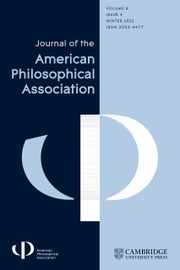Article contents
The Microstructure of Experience
Published online by Cambridge University Press: 13 June 2019
Abstract
I argue that experiences can have microphenomenal structures, where the macrophenomenal properties we introspect are realized by non-introspectible microphenomenal properties. After explaining what it means to ascribe a microstructure to experience, I defend the thesis against its principal philosophical challenge, discuss how the thesis interacts with other philosophical issues about experience, and consider our prospects for investigating the microphenomenal realm.
Keywords
- Type
- Articles
- Information
- Copyright
- Copyright © American Philosophical Association 2019
Footnotes
I am very grateful to David Chalmers for comments and discussions across numerous drafts of this paper. I have also benefited from comments and discussions with Ned Block, Kyle Blumberg, Philip Goff, Hedda Hassel-Mørch, Grace Helton, Daniel Hoek, Ben Holguín, Pierre Jacob, Arden Koehler, Uriah Kriegel, Harvey Lederman, Geoffrey Lee, Robert Long, Daniel Muñoz, Thomas Nagel, Luke Roelofs, Peter Unger, James Walsh, two anonymous referees, and audiences at the City University of New York, Institut Jean Nicod, and New York University.
References
- 1
- Cited by




